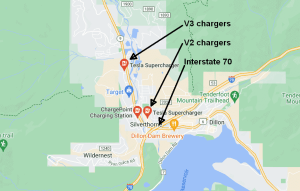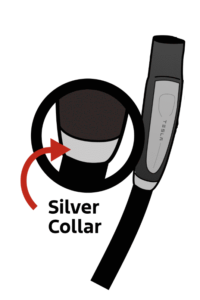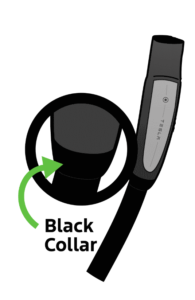
(Updated to include fun fact about the color of the charging plug.)
Let’s suppose you are driving along Interstate 70 and you decide to exit at Silverthorne, Colorado to do some Tesla supercharging. There is a first supercharging station two minutes off the exit, having 12 kiosks, and there is a second supercharging station six minutes off the exit, with a mere 8 kiosks. Which one should you go to for charging your car?
The marked-up map above reveals the answer. You should almost certainly go the one that takes an extra four minutes to reach. There are at least two reasons for this.
First, the supercharging station that is slightly further from the interstate exit (at 101 Ruby Ranch Road) is a V3 station, meaning it charges at 250 kW. By comparison, the fastest charge that you could get from the closer supercharging station (at 309 Rainbow Drive) is only 150 kW, because it is a V2 station.
Second, any time you go to a V2 station, there is the chance that you may only get a charging rate of 75 kW. This is because of the A-B problem. If you are getting ready to plug in your car at, say, kiosk 3B, and if somebody else is already charging their car at, say, kiosk 3A, then your actions will lead to that other car dropping from a charging speed of 150 kW down to a mere 75 kW. And you will only get 75 kW of charging speed. (See this blog post about proper supercharger etiquette.)
There is a third drawback to charging at the closer-in supercharging station, namely that it does not alternate A-B-A-B. Instead, as described in this blog post, the layout is A-A-A-A-B-B-B-B. So at this station, if you want to avoid the 75-kW problem, you pretty much have to hop out of your car and study the markings on all eight kiosks in the row to work out which one might yield 150 kW instead of 75 kW. In contrast, if you drive the extra four minutes to the station that is slightly further off the interstate highway, you can simply use any of the kiosks that happen to be available and none of the kiosks will be slower than the others.
Update. One way to know whether you are at a V2 or V3 supercharger is to look closely at the charging plug. If the charging plug is all black (see image below) then it is the newer and better V3 charger. If the charging plug has a silver collar at the base of the charging plug, then it is the older and slower V2 charger.
| V2 supercharger | V3 supercharger | |
| collar color |  |
 |
| maximum charging speed | 150 kW, sometimes only 75 kW | 250 kW |
| you have to worry about A and B | yes | no |
2 Replies to “Where the smart drivers go to charge”